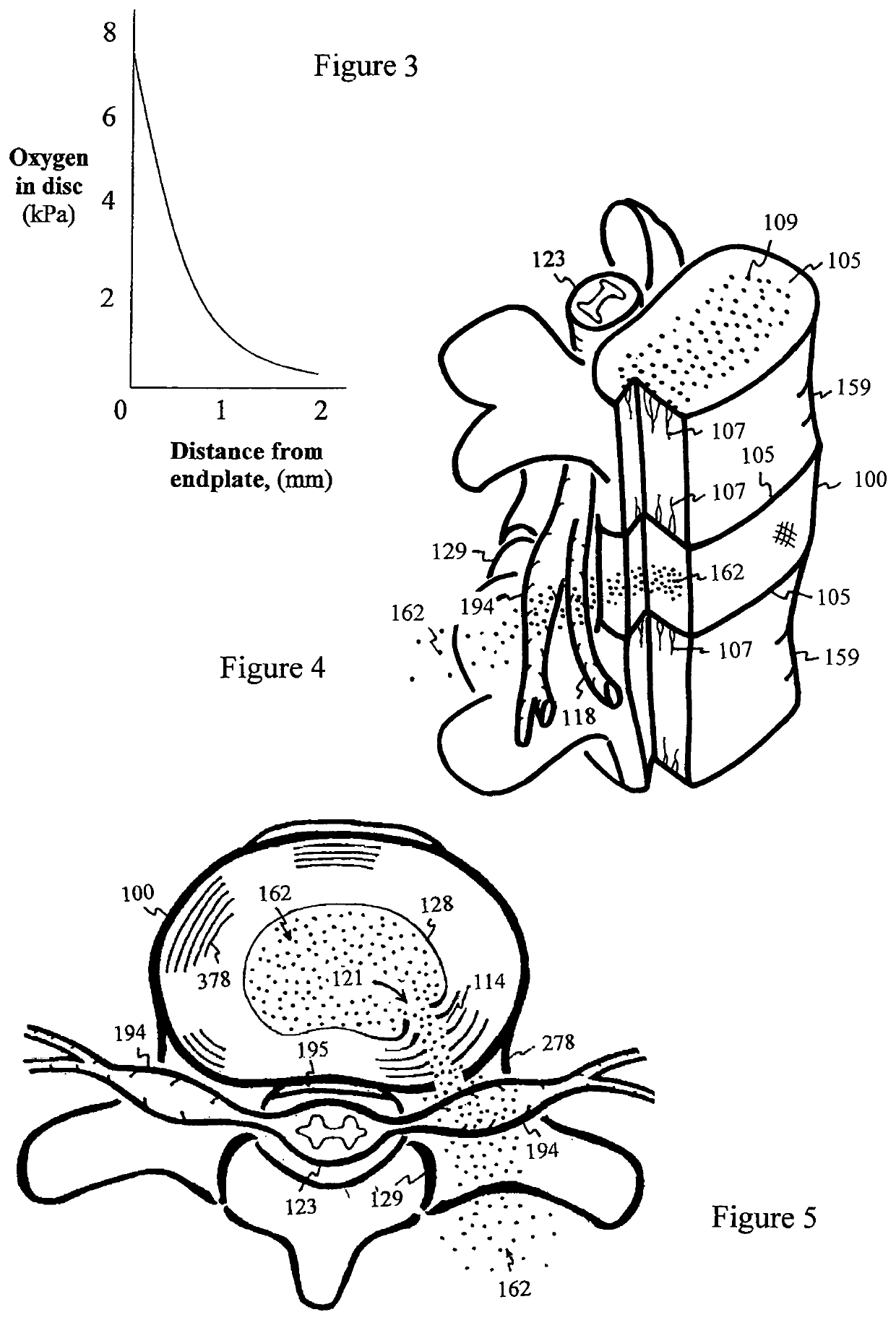Method for relieving pain and regenerating intervertebral disc
a technology of intervertebral disc and back pain, which is applied in the field of back pain and intervertebral disc regeneration, can solve the problems of chronic discogenic pain, facet strain and pain, urinary incontinence, etc., and achieve the effects of reducing discogenic pain, reducing discogenic pain, and inhibiting hypoxic inflammation
- Summary
- Abstract
- Description
- Claims
- Application Information
AI Technical Summary
Benefits of technology
Problems solved by technology
Method used
Image
Examples
Embodiment Construction
[0194]Intervertebral discs are avascular (no blood vessels). nutrients / oxygen / pH buffer 131 essential for disc cells are supplied by the capillaries 107 in the vertebral bodies 159 and diffused from superior and inferior endplates 105 into the disc 100, as shown in FIGS. 1 and 2. Blood pH is tightly regulated between 7.35 and 7.45, mainly by the pH buffering bicarbonate dissolved in blood plasma diffused through superior and inferior endplates 105 into the disc 100.
[0195]However, depth of diffusion becomes shallow into thick human discs 100. Depth of oxygen diffusion from the endplates 105 is summarized in FIG. 3 (Stairmand J W, Holm S, Urban J P G: Factor influencing oxygen concentration gradients in disc, Spine, Vol. 16, 4, 444-449, 1991). Similarly, depths of glucose diffusion are less than 3 mm from superior and inferior endplates (Maroudas A, Stockwell R A, Nachemson A, Urban J: Factors involved in the nutrition of the human lumbar intervertebral disc: Cellularity and diffusion...
PUM
 Login to View More
Login to View More Abstract
Description
Claims
Application Information
 Login to View More
Login to View More - R&D
- Intellectual Property
- Life Sciences
- Materials
- Tech Scout
- Unparalleled Data Quality
- Higher Quality Content
- 60% Fewer Hallucinations
Browse by: Latest US Patents, China's latest patents, Technical Efficacy Thesaurus, Application Domain, Technology Topic, Popular Technical Reports.
© 2025 PatSnap. All rights reserved.Legal|Privacy policy|Modern Slavery Act Transparency Statement|Sitemap|About US| Contact US: help@patsnap.com



